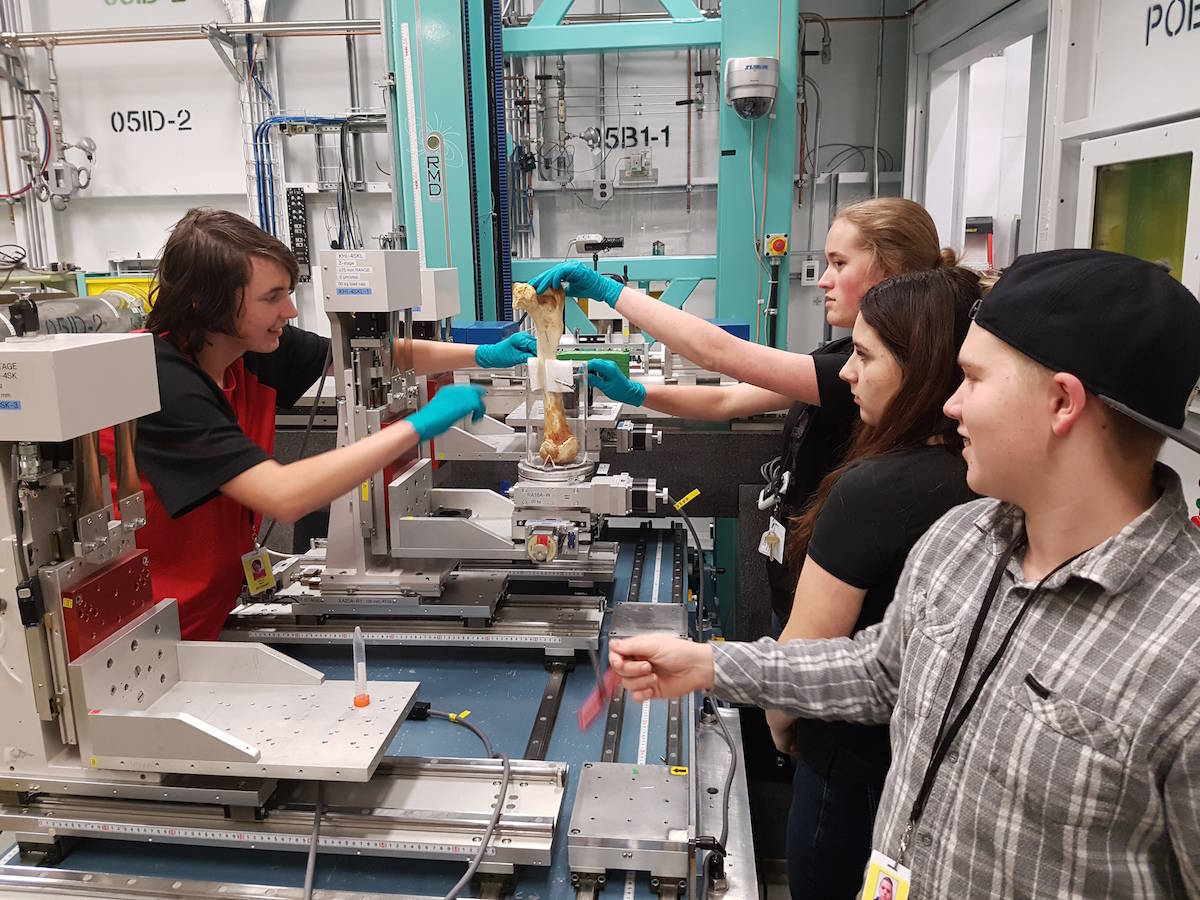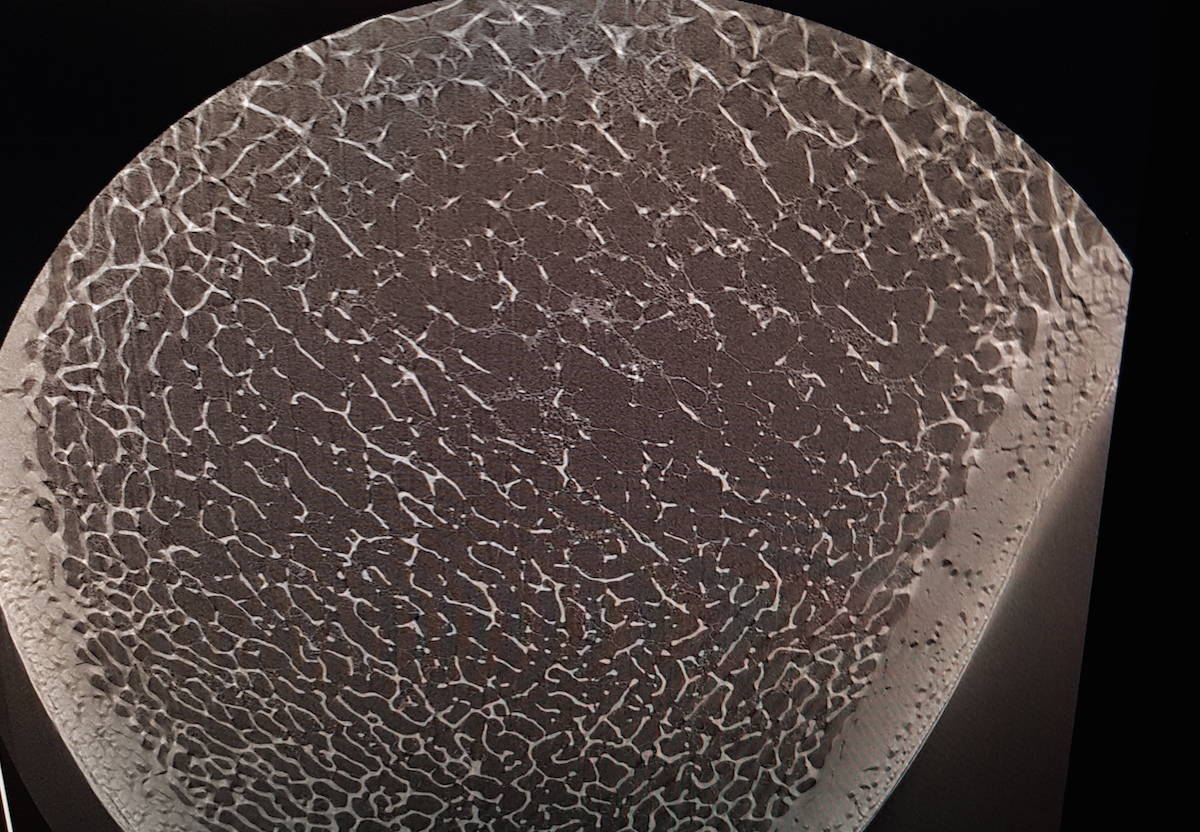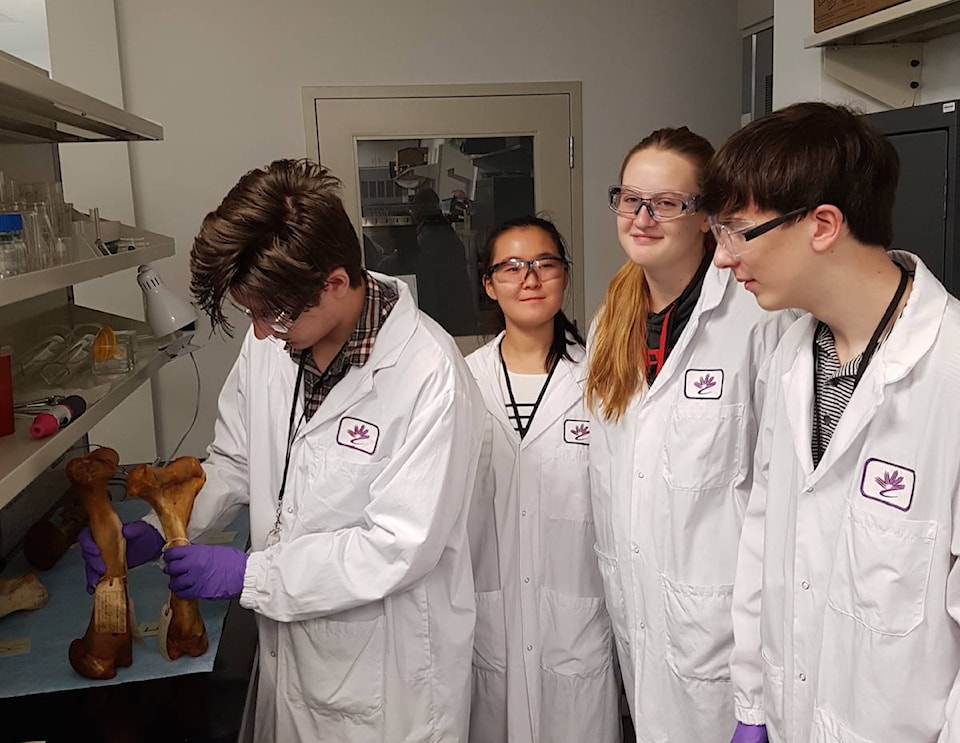1. The two students looking at the images of the bones are Donovan Beck (10) and Izak Brackley (10)
2. In the photo with the 2 bones it is Braydon Werdal (12), Davina Choi (11), Nora Wolfe (11), Lewis Sheridan (12)
3. In the photo of students setting up the bone in BMIT they are Donovan Beck (10), Kayleigh Wolfe (12), Kayla Mitchell-Chadwick (12) and Izak Brackley (10)
The results of the young polar bear’s bone scan were perplexing.
Polychlorinated biphenyls (PCBs) were known to affect bone density, causing osteoporosis, but one would expect a younger animal to have less exposure and less damage.
“We were thinking how would a bear that young get PCB exposure that fast?” is how Isabell McElhinney summed up the conundrum facing a dozen Sundre High School students, who recently had an opportunity to study polar bear bones at the Canadian Light Source research facility in Saskatoon.
Mother’s milk was the answer. Polar bear mothers unwittingly passed on PCBs as they nursed their young.
The opportunity to undertake this kind of science is what the high school students in the Polar Bear Express club were hoping for when they applied for Canadian Light Source’s Students on the Beamlines program.
Through the initiative, groups of students are given the chance to work with scientists on research projects using the Biomedical Imaging and Therapy beamline. One of only three dedicated synchotron-based medical beamlines in the world, the device uses light millions of times brighter than the sun to create images of biological tissue.
Sundre’s inquiring young minds wanted to put the equipment to the task of determining whether the osteoporosis PCBs created in the dense bone in polar bear skulls was mirrored in spongier bones found in the animals’ upper arms.
“No one had studied that. “We were the first ones to look at that,” said chemistry and physics teacher Ryan Beck, who with another Sundre teacher and an Alberta Education advisor joined the Grade 10-12 students earlier this month on a unique scientific road trip.
Man-made chemicals used in manufacturing and electrical transformers, PCBs were widely used in the 1960s but banned in 1979 because of their impact on the environment and human and animal health.
Over five days, the Sundre students were able to study bones from 1960, 1961, 1975 and 2000 to the present provided by Ottawa’s Canadian Museum of Nature and Winnipeg’s Assiniboine Zoo.
The work students did with the bones of a four-year-old bear proved especially significant. Bone density of the young bear was 60 per cent lower than it should have been.
No one had seen PCB-caused bone density loss to that extent in a juvenile mammal before. That is when their minds turned to the mother bear’s milk and fat-soluble PCBs.
“So there was a whole bunch of PCBs being passed on to the baby by the milk,” said Grade 10 student and Ryan’s son. Donovan Beck.
Working at CLS’s facility was an “awesome experience,” said Beck.
“We did some stuff like move the bones around in the machine. There actually weren’t any holders big enough for the bones. So we actually had to make our own from stuff we found there.”
Izac Brackley was no less impressed.
“It truly made my jaw drop the minute I walked through the door,” said the Grade 10 student. “Everyone was completely shocked at how amazing it was.
“It took us several minutes to actually get our minds set into the science, we were so blown away.”
McElhinney was fascinated by the beamline equipment, which she compared to a CT scanner only with much higher-quality images.
“You can actually see the independent pores in the bones,” said Brackley, also in Grade 10. “It was really cool to be around that kind of technology and see all that stuff.”
And, of course, it’s always nice in scientific circles when theory and reality match.
“It was really cool that our research was consistent with our hypothesis. So what we thought was going to happen, happened pretty much.”
pcowley@reddeeradvocate.com
Like us on Facebook and follow us on Twitter


